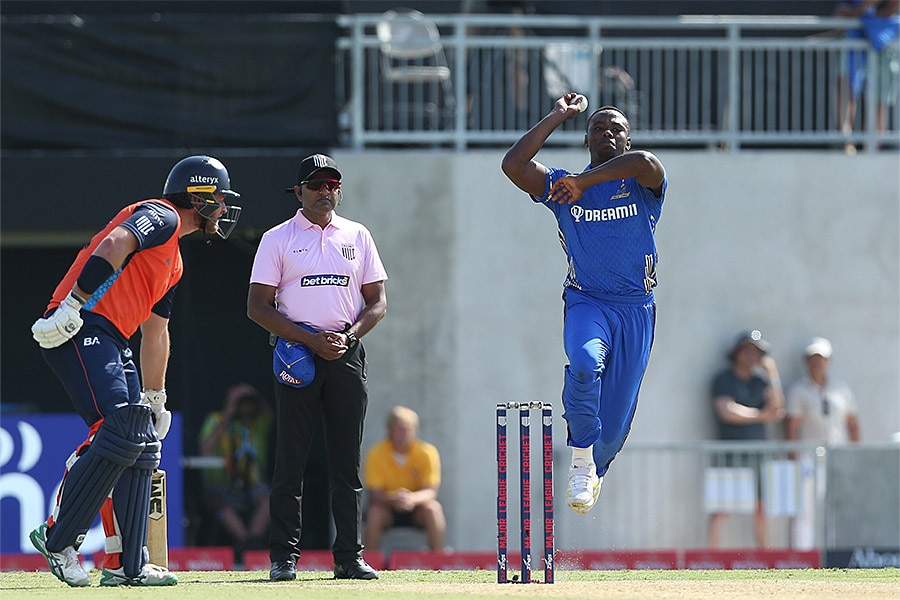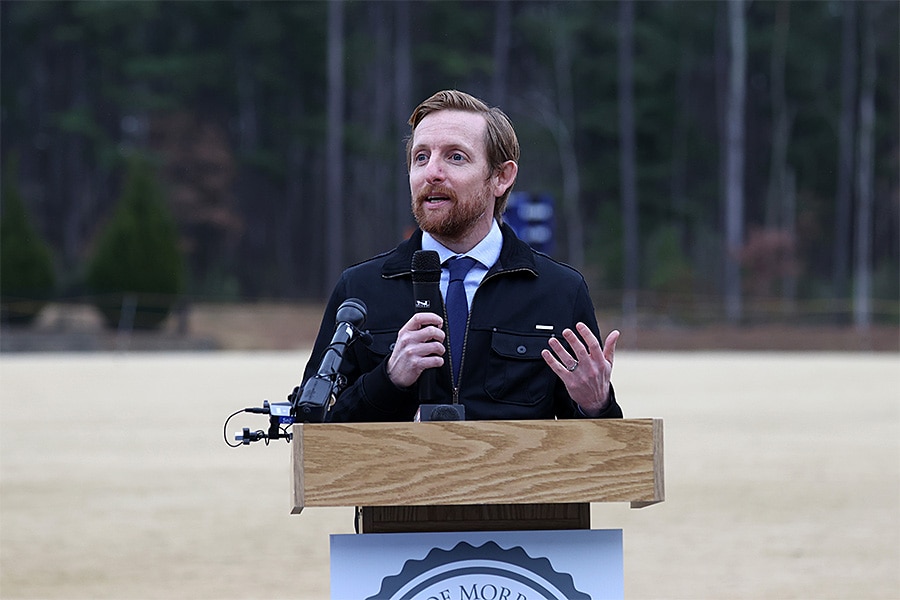
The T20 World Cup in 2024 will give a huge fillip to cricket in the US: MLC's Tom Dunmore
A cricket audience in America needs to be built brick by brick, but if the first season of the MLC is anything to go by, it's a strong start, says Dunmore, VP, marketing, of the league
 Kagiso Rabada of MI New York playing against San Francisco Unicorns during a Major League Cricket match held at the Grand Prairie Stadium, Texas, United States Image: Courtesy MLC
Kagiso Rabada of MI New York playing against San Francisco Unicorns during a Major League Cricket match held at the Grand Prairie Stadium, Texas, United States Image: Courtesy MLC
The first edition of Major League Cricket (MLC), a six-franchise T20 tournament in the US, is into its last mile, and there have been a few sell-outs already, says Tom Dunmore, the vice president of marketing, MLC. America might be a baseball country, he says, but there’s no reason why cricket can’t be slowly injected into its landscape, especially because newer audiences are willing to look beyond the traditional favourites. The country also has a history with the game—the first ever international cricket match was played between the US and Canada, in 1844, a good 33 years before the first Test match was played between England and Australia. MLC has made a good start, but the focus in the next few years will be on finetuning the platform and building a new audience, Dunmore tells Forbes India in an interview. Edited excerpts:
Q. The group stage of Major League Cricket (MLC) is over. Your first thoughts on T20 cricket in America?
We’ve sold out all the seven games in North Carolina and the first few games in Dallas, although these are relatively small venues. The stadium in Dallas is 6,000-7,000 capacity, while the former is about 3,500. But I’m sure we could have sold many more tickets even if we had larger venues.
But it’s not just the numbers. The energy and the passion in the stadium, and the excitement of seeing international players in flesh, have been incredible. We’ve already got a great support base from cricket fans who’ve grown up in a cricket-loving country but now live here—that gives us a strong platform to build from. They’ve never had a domestic league to watch and follow nor prime time cricket to watch; they’ve had to watch it in the middle of the night, in keeping with the time zones of the rest of the world where cricket matches are typically played. T20 gives you the chance to take a great product to them, where you can bring superstar players from other countries along with quality domestic players. When you combine that, you’ve got something that really works.
We didn’t know for certain how this would be received, but early indications are definitely strong. We’ve had proof of concept that the existing fanbase loves it, from here it’s a question of how we build new fanbases. It’ll take time, but the US is such a big country and such a sport-mad country that even if we get a sliver of the larger population that doesn’t know cricket, it will add to what’s already the fourth or fifth-biggest cricket media market in the world anyway.









